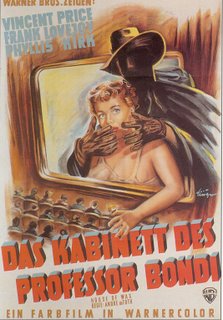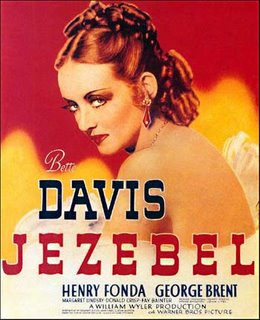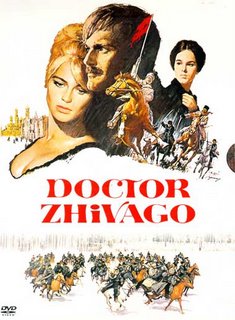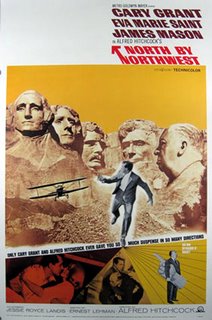House of Wax
 In the early 1950's television had erupted into the pop culture world, initially devouring cinema, which suffered greatly at the expense of the new medium which customers could get for free from the comfort of their own living room. The great innovators that they were, studio heads began plotting ways to get people back into theaters, and this thinking if what led to the 1950's and early 1960's being the golden age of the epic. Studios had to give people something they couldn't see on a small, black and white 16 inch screen. Another, more kitschy, but less remembered ploy to win back customers was 3D. Used today as more of a gag, 3D was an honest attempt to distinguish cinema, and Warner Bros. poured a lot of money into the innovation. Their most ambitious gamble was 1953's "House of Wax". A remake of the studio's own 1933 film "Mystery of the Wax Museum", "House of Wax" is a virtual scene for scene remake of that film, with a few key differences. For one, it is in lush technicolor, it also has the added appeal of being filmed in 3D (which serves for some rather superfluous shots while viewing it at home now, 50 years later), but most significantly, it stars Vincent Price as Prof. Henry Jarrod. Lionel Atwill was the mysterious doctor in the 1933 original, but he cannot possibly compete with the handsome and charismatic Price, who would go on to become a horror icon throughout the 1950's and 1960's. As the brilliant sculptor a little too in love with his creations, Price perfectly balances the artistic genius with the sadistic madness his character is ultimately consumed by. At the time every studio was struggling from the effects of television, but Warners had been in a rut for several years in addition, and "House of Wax" turned into a huge money maker for them (their biggest hit since 1947's "Life With Father"), turning Price into a bona fide star. While watching today, the film can come across as somewhat campy, mostly because of the poorly staged setups for 3D, and the stilted acting from virtually everyone other than Price, but enjoying it for what it really is: a showcase for Vincent Price and a visually stunning film by director Andre De Toth, the film is a horror masterpiece.
In the early 1950's television had erupted into the pop culture world, initially devouring cinema, which suffered greatly at the expense of the new medium which customers could get for free from the comfort of their own living room. The great innovators that they were, studio heads began plotting ways to get people back into theaters, and this thinking if what led to the 1950's and early 1960's being the golden age of the epic. Studios had to give people something they couldn't see on a small, black and white 16 inch screen. Another, more kitschy, but less remembered ploy to win back customers was 3D. Used today as more of a gag, 3D was an honest attempt to distinguish cinema, and Warner Bros. poured a lot of money into the innovation. Their most ambitious gamble was 1953's "House of Wax". A remake of the studio's own 1933 film "Mystery of the Wax Museum", "House of Wax" is a virtual scene for scene remake of that film, with a few key differences. For one, it is in lush technicolor, it also has the added appeal of being filmed in 3D (which serves for some rather superfluous shots while viewing it at home now, 50 years later), but most significantly, it stars Vincent Price as Prof. Henry Jarrod. Lionel Atwill was the mysterious doctor in the 1933 original, but he cannot possibly compete with the handsome and charismatic Price, who would go on to become a horror icon throughout the 1950's and 1960's. As the brilliant sculptor a little too in love with his creations, Price perfectly balances the artistic genius with the sadistic madness his character is ultimately consumed by. At the time every studio was struggling from the effects of television, but Warners had been in a rut for several years in addition, and "House of Wax" turned into a huge money maker for them (their biggest hit since 1947's "Life With Father"), turning Price into a bona fide star. While watching today, the film can come across as somewhat campy, mostly because of the poorly staged setups for 3D, and the stilted acting from virtually everyone other than Price, but enjoying it for what it really is: a showcase for Vincent Price and a visually stunning film by director Andre De Toth, the film is a horror masterpiece.As the film opens, Henry Jarrod is showing his business partner his latest prized creations, all painstaking recreations from history, including Joan of Arc and Marie Antoinette, two statues he has spent particular time and attention to. His partner, Matthew Burke, keeps trying to convince Jarrod to focus more on gory, sensational stuff, to give the public a show, but Jarrod sees his work as art, not as cheap thrills for the amusement park crowd. The two start arguing over money, and Burke considers burning down the museum to collect the insurance money, an idea Jarrod vehemently opposes. Their argument soon turns violent as the two begin to fight. Burke subdues Jarrod and manages to light fire to a number of the statues, before narrowly making it out of the building before it is completely consumed by the flames. Jarrod however is not believed to have escaped. Cut to some years later and a new wax museum is nearly ready to open, except no one knows who its mysterious benefactor is. Of course it is Jarrod, now confined to a wheelchair and with a decidedly maniacal streak to him, but otherwise appears healthy considering the last time he was seen. Now seemingly taking his partner's advice, Jarrod's new museum is almost entirely comprised of shocking, violent scenes, some eerily recreated from actual events, such as Jarrod's partner, who was found hanged to death in an elevator shaft. Running parallel with Jarrod's re-emergence into society is a gruesome figure who stalks the streets at night, and two mysterious men who steal bodies from the city's morgue. While the astute viewer will realize that the gruesome figure is in fact Jarrod himself, exacting his revenge first on Burke, then setting his sights on two pretty young women, Sue Allen and Cathy Gray, De Toth keeps this information concealed, dropping clues, but for the most part keeping the two stories (Jarrod and the re-opening of the museum, and the mysterious figures prowling the streets) seperate. Soon after Sue Allen disappears, her distressed friend Cathy Gray makes the acquaintance of Henry Jarrod, thanks to her friend, Scott Andrews, a promising young art student himself and admirer of Jarrod's work. Cathy too is impressed by Jarrod's charisma and devotion to his art, but is taken aback when she thinks Jarrod's new Joan of Arc statue bears a striking resemblance to her missing friend Sue.
Cathy is troubled by the Joan of Arc statue, and begins snooping around Jarrod's museum after its grand opening, lingering at the base of it and staring at what she thinks is her friend. Jarrod keeps pursuing her to model for his new Marie Antoinette statue, and Scott tries convincing her too, as he is now apprenticing in Jarrod's workshop with Igor, Jarrod's mute assistant (played by an impossibly young, and quite scary looking Charles Bronson, billed as Charles Buchinsky). Eventually Cathy relents, and cannot help but be placated by the charismatic Jarrod, who seems so in love with his statues that she is willing to forgive the strange coincedence. That is until she realizes, amidst continuing newspaper coverage of bodies snatched from the morgue, the phantom figure who chased her through the streets, and Jarrod's ability to recreate real life crimes with uncanny accuracy, that Joan of Arc is Sue, a point confirmed by a birthmark the statue would never simply have. Cathy is now convinced of the diabolical methods Jarrod employs to supply his museum with the latest marvels, and when Scott confronts Jarrod about it, he strikes him, revealing the hideous figure who had been stalking the streets. After the fire, his face horribly disfigured, Jarrod fashioned for himself a wax mask of his old face, and continued his artistry, albeit with a twist of the macabre. Jarrod captures Cathy and has her bound in his laboratory, in preparation to be covered in the scalding hot wax, while Igor and Scott fight in the museum above. Scott very nearly is beheaded by the all too real guillotine in one of the exhibits, and manages to subdue Igor. With the help of the police, Scott bursts into the laboratory moments before Cathy is to be killed and pushes Jarrod into the boiling vat of wax, ironically killing the crazed artist. Finally, in an epilouge befitting modern day horror movies, the police are discussing the fallout of the case and how Igor is in prison, still practicing his teacher's craft. One of the policeman then displays a terrifying wax mask of Igor, thrusting it at the audience (aided by the 3D technology) for a final "boo!" scare, as well as setting up a sequel (which never happened, thankfully). While Vincent Price would unfortunately go on to become somewhat of a caricature in horror movies, long after his nickname the 'Grand Guingol" became outdated, his work here, is incredible, and the film itself is a true horror classic.



